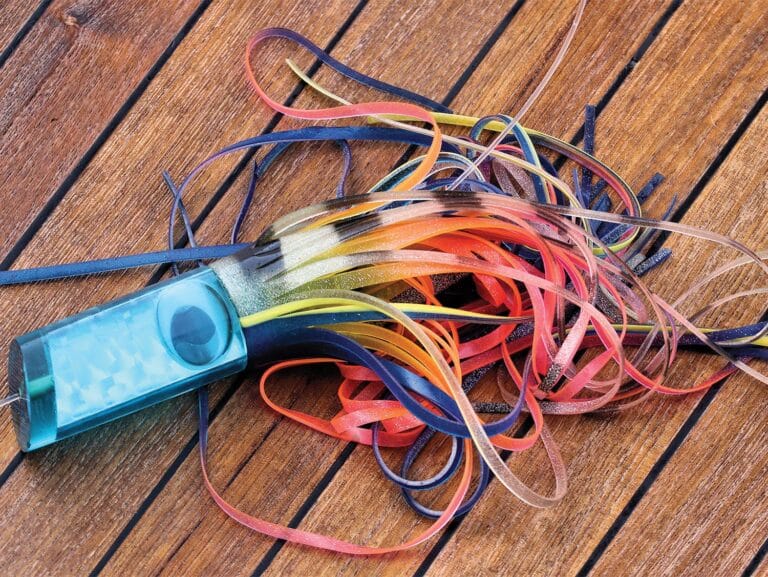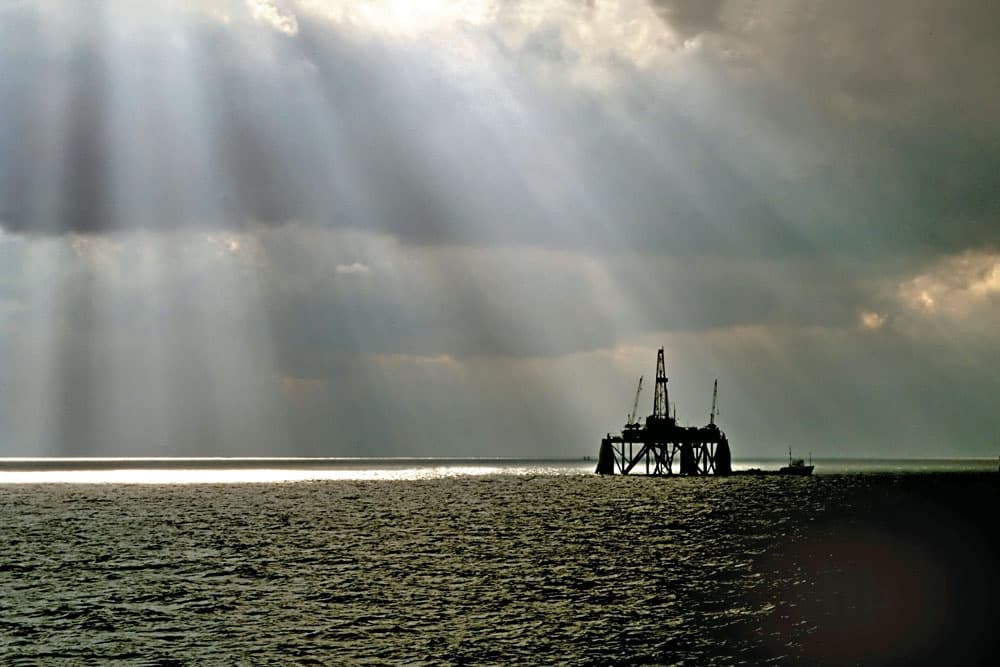
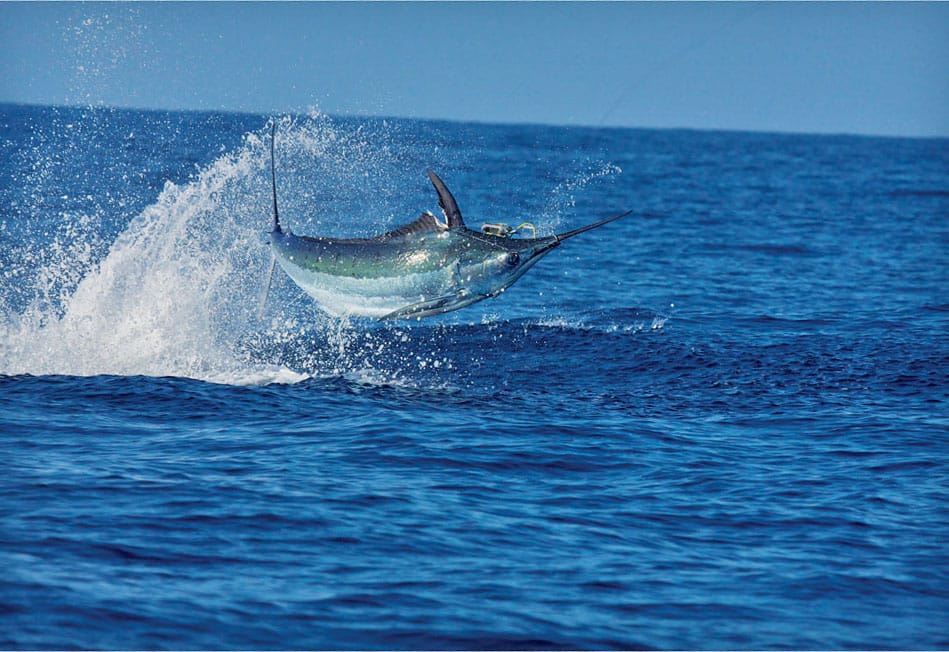

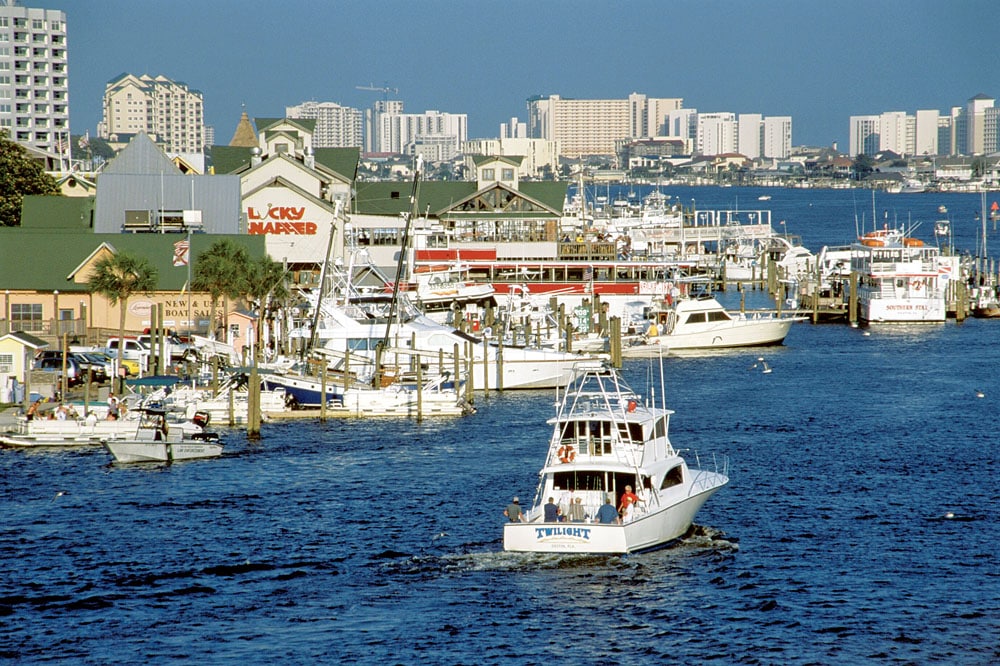
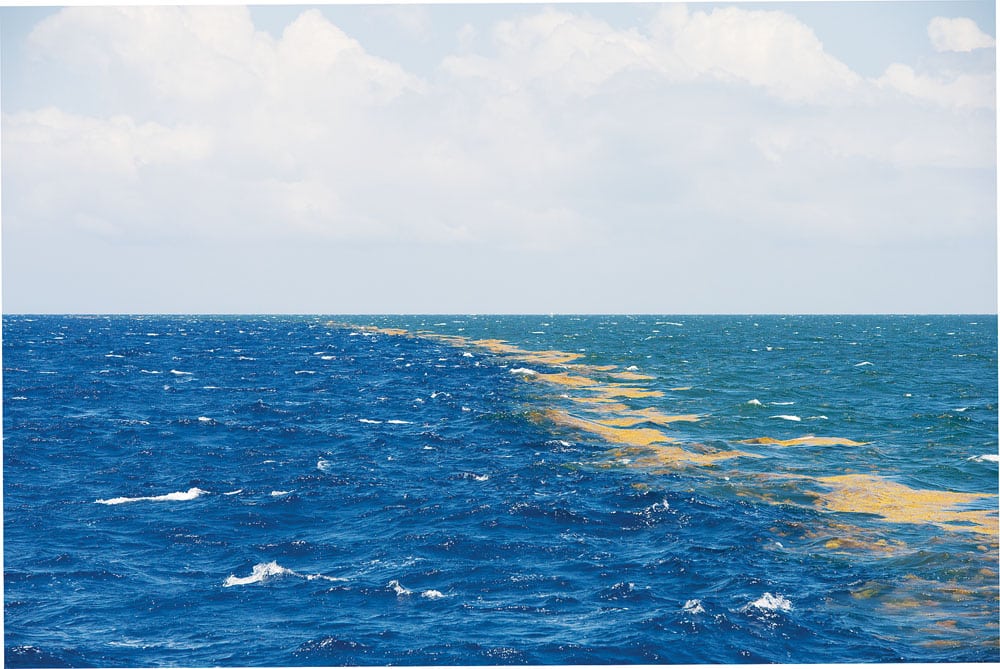
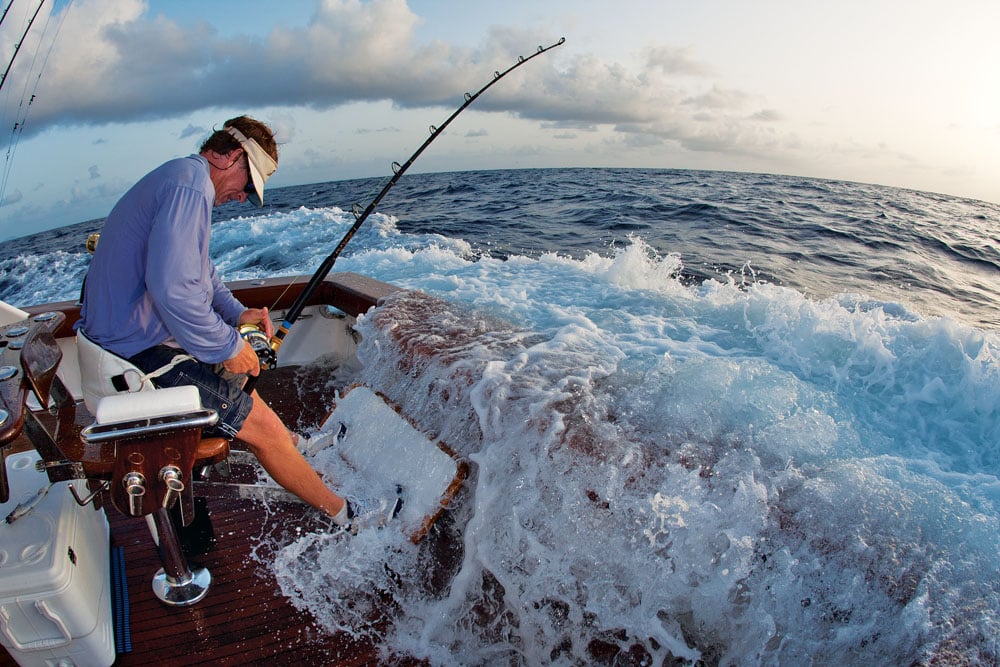
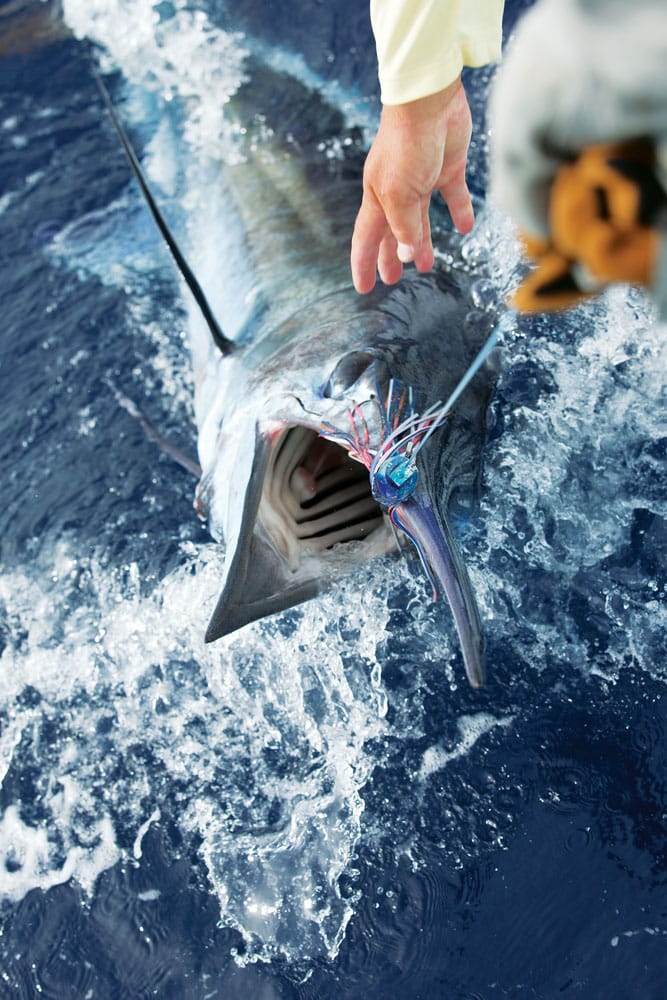
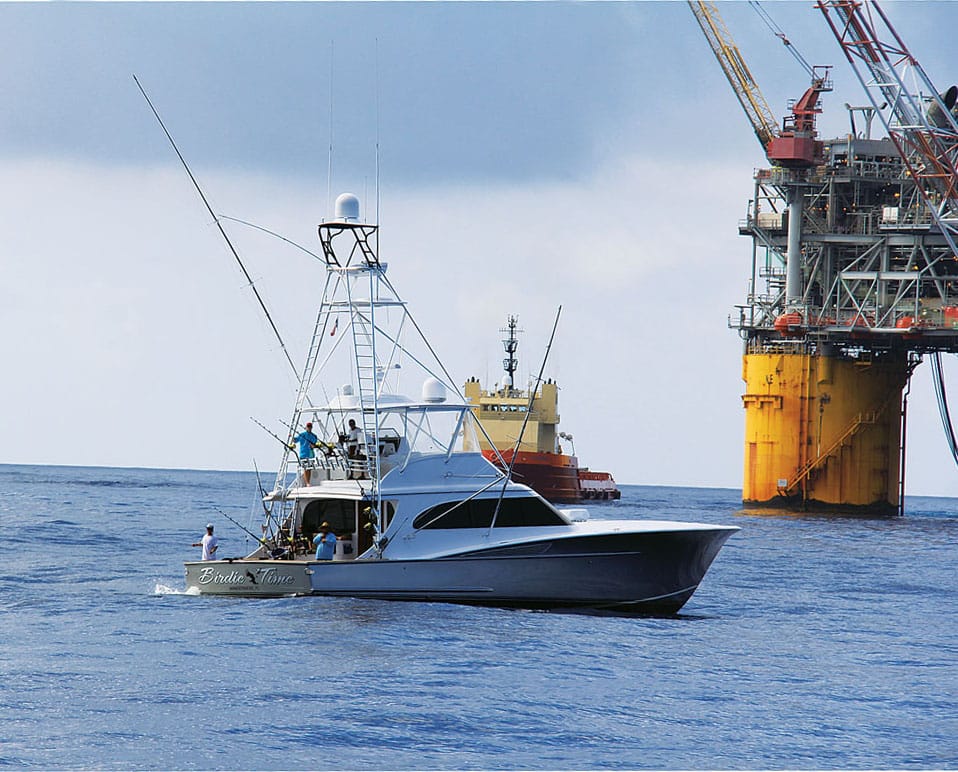
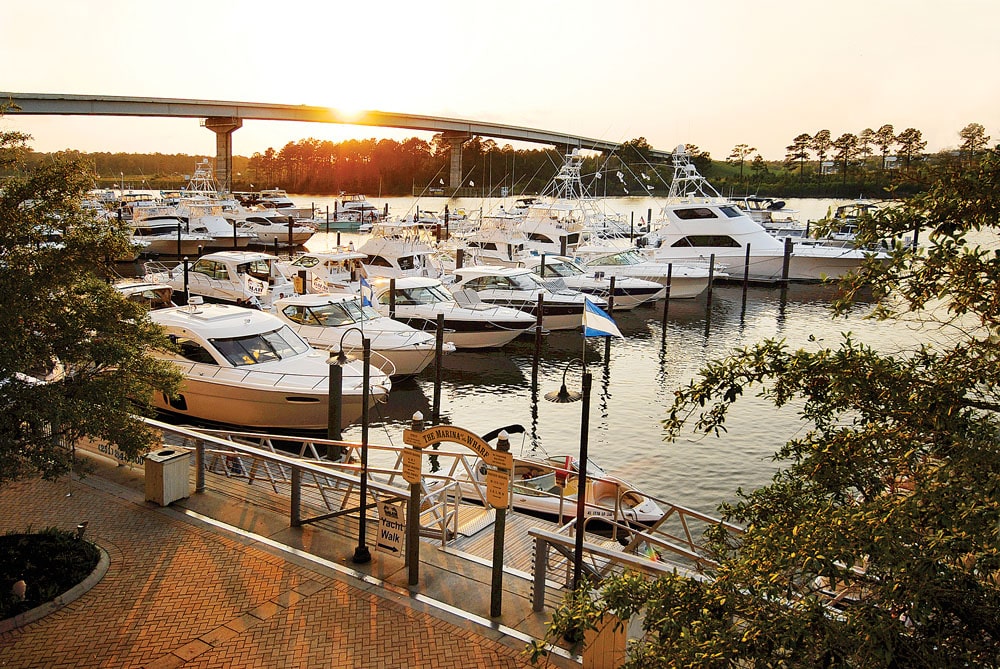
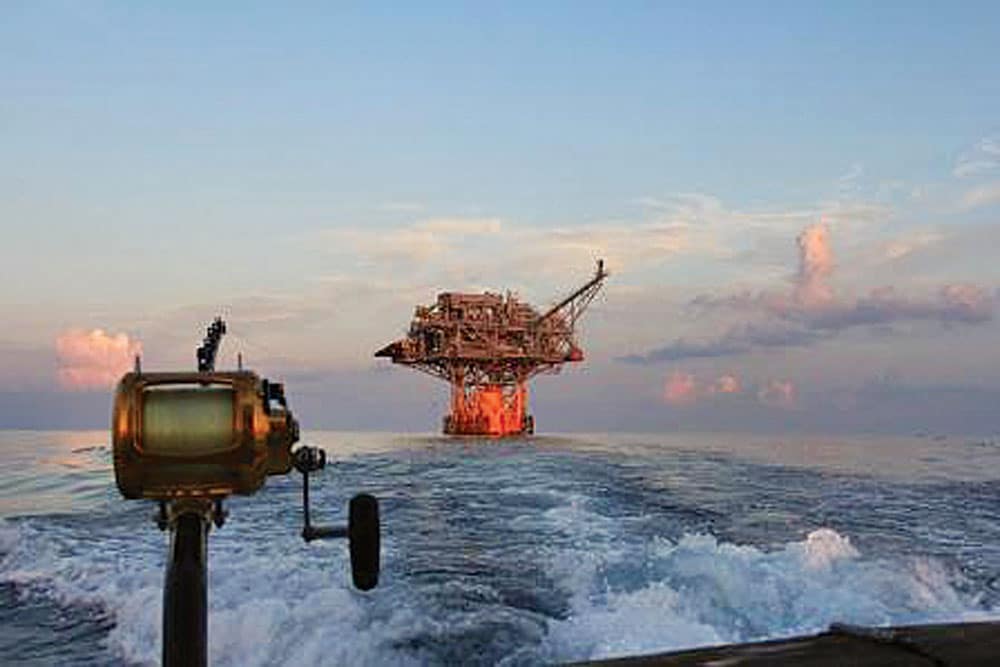

It seems as though every year a new and different red-hot billfishing destination hogs all the ink, creating a buzz felt throughout social media and the World Wide Web. With all the outstanding billfish hot spots around the globe, one still lives in the shadows: the tremendous offshore action found in the Gulf of Mexico. While those in the know would likely prefer to keep their secret safe, the number and size of fish posted from these waters (especially in recent years) simply cannot be ignored any longer. Finally, the states with southern coastlines etching out the northern perimeter of this body of water have slowly started to gain the respect they well deserve. And the global billfishing community has taken notice.
We spoke with a handful of Gulf Coast billfish experts to discuss the overshadowing, the continual growth of the sport, and the genuine quality of fishing found in the region, and while their ports of departure differ, we discovered a few undeniable similarities in the growing passion for billfishing found in the region today. Tournaments draw skilled participants, and with that comes an increase in catch numbers and bigger fish. However, the number of people fishing isn’t the only reason Gulf anglers are catching more and bigger fish. Most agree that the fish have always been there, but that the number of captains and crews using more-refined techniques have only just begun to catch up. If this progression continues, this relatively untapped resource could very well become a destination fishery that rivals any other in the world.
Venice, Louisiana
Approximately 80 miles southeast of New Orleans, Louisiana, lies Venice, a town that offers next to nothing to tourists seeking a Bourbon Street experience. Instead, Venice provides world-class offshore- and inshore-fishing potential. As desolate and industrial as Venice might seem at a glance, it somehow surprises with a charm all its own. Born and bred in Baton Rouge, Louisiana, Richard Creed knows these offshore waters well, and when he’s not fulfilling -freelance-captain gigs around the world, you’ll find him in Venice — especially during the prime billfish season in July. In his 31 Bertram, Targeted Species, Creed has witnessed first-hand what the Gulf has to offer. “Our average fish is absolutely, no doubt 300 pounds, and it’s not uncommon in any way to encounter much -bigger fish,” says Creed. “You don’t have to fish 80s or 130s, but you really need to fish 50s or better.”
Knowing that a giant could enter your spread at any given moment certainly weighs in as an attractive -characteristic of any destination, but it takes more than just big fish to make it great. Anglers need options, and the geographic location of Venice provides plenty. “I kind of look at Venice as somewhat of a middle ground in the Gulf. You are literally a three- to four-hour boat ride to the rigs, which we all know consistently hold fish. Even a weekend warrior has a good shot trolling next to one of these things. From Venice, you can run 80 to 100 miles and fish so many different areas. You have access to DeSoto Canyon, Mississippi Canyon and Green -Canyon, just to name a few,” says Creed.
As all of us anglers know, the water does squirrelly things from time to time, and the water’s attitude almost always dictates how far we have to run to find the bite. Off Venice, the distance to blue water differs from year to year, and much of this has to do with the Mississippi River, which for Creed’s money creates the best rip in the world. More and more anglers have discovered what can happen when you run out of Venice, especially if you don’t limit yourself to just pulling lures. “I think you’re hearing about bigger fish and more fish in the Gulf because guys are trying different things,” says Creed. “We’re seeing more and more guys live-baiting, dredge-fishing — you name it and somebody off Venice is probably doing it, and that’s why you’re starting to hear the buzz.”
Louisiana State Record: Linda Koerner, 1,018 pounds; 1977
Biloxi, Mississippi
A longtime bastion of the Southern billfishing scene, Biloxi caters to the laid-back genteel lifestyle like few other destinations. In addition to its great fishing, Biloxi adds the extra allure of legalized -gambling — even though in the early days, it wasn’t exactly legal. Once the gambling laws were lifted in the ’90s, the coastal town of Biloxi began to change. Casinos attracted a whole new influx of tourists. All of this inadvertently created a billfish spot that offered much more than just big blue marlin. Bobby Carter runs the Mississippi Gulf Coast Billfish Classic and credits his event, in addition to several others, to the rising popularity of billfishing in the Gulf. “What’s spreading the word is the tournament circuit we have here. Tournaments are offering more cash, which attracts more people — and bigger fish naturally come with that,” says Carter. “If you look at the fish that have been caught in recent years, it’s pretty impressive. Barry Carr’s 1,054-pound blue marlin caught at our event in 2002 still stands as the largest marlin caught in the Gulf. Not to mention the season Alabama had last year, where the state record was broken twice in the same day.”
Carter says that for a long time, people thought they had to go to some exotic or tropical location to find consistent billfishing, but that’s simply not the case. “The oil rigs off Biloxi attract a huge -number of fish, and I believe the abundance of bait that holds around these structures keeps our pelagics around much longer. We catch all kinds of fish off those rigs: dolphin, wahoo, tuna, marlin, snapper, cobia — you name it.”
Typical runs out of Biloxi range anywhere from 80 to 90 miles. While that is indeed a considerable haul -compared with other -marlin -destinations, Carter confidently claims once you’re out there, especially during June and July, you stand a good chance of getting anywhere from three to four blue marlin bites a day, and the odds are pretty good that at least one of those fish will be a better-than-average-size fish.
Just like the early days, Biloxi still offers outstanding fishing — and of course, gambling — but the main -difference today is the amenities. This town has anything and everything for anglers and nonanglers alike. “Because of the fishery we have and because of what Biloxi offers the entire family onshore,” Carter says,” I could certainly see us turning into what you’d call a world-class destination fishery.”
Mississippi State Record: Barry Carr , 1,054.6 pounds; 2002
Destin, Florida
The sugar-sand beaches and crystal-clear waters of Florida’s Panhandle attract scores of beachcombing visitors each year, but surprisingly enough, few of these sun-worshiping tourists realize the big-game opportunities that lie offshore. Capt. Joe Birbeck and his mate, Stan Blackman, run the 77 F&S, You Never Know out of Destin, and they are beginning to see more and more boats making the runs offshore to get in on the action.“The reputation of the Gulf as a whole is changing fast, and the big-fish season we enjoyed last year definitely helps,” says Birbeck. “It’s amazing — last year we killed a 756-pounder at the Mobile Big Game Fishing Club Memorial Day Tournament, which at the time was 23 pounds away from the state record. Then, just four tournaments down the road, that fish wouldn’t have even been on the board!”
When asked about their most effective tactic for catching blue marlin, Birbeck and Blackman remained slightly -tight-lipped, but Birbeck did reveal that last year a good percentage of the big fish were taken on live bait, -specifically around structure. “Out of Destin, we have access to rigs and drill ships, which are basically FADs that always hold bait. Obviously, that food source is a major draw,” says Blackman.
Birbeck and Blackman don’t hide the fact that fishing out of Destin requires marathon runs. “When we -tournament-fish out of Destin, we do have to make lengthy runs. For example, the closest rig you can get to is 80 miles out,” says Blackman.
“Last year, when we killed that 756, we were 224 miles from the dock,” says Birbeck.
The captain and mate both agree that in addition to long runs, anglers often turn away from Destin, because in order to be successful here, you simply can’t go out and troll blind. “We are religious on paying attention to reports like Roffers. And not just on the days we fish, but on all the days before. Here it’s critical to find certain weather patterns, and study sea-surface temperatures, color, breaks, and so on,” says Birbeck. “This is definitely not a -drop-and-drag fishery.”
If you do your homework and remain flexible, Destin is hard to beat fishwise, and when it comes to onshore amenities, this Panhandle hot spot offers more than most.
Florida State Record: Conrad E. Hawkins, 1,046 pounds; 2001
Port Aransas, Texas
Along the coast of Texas, -skippers and crews have various ports from which to choose for their billfishing efforts. With a motto of “Always in Season,” Port Aransas, or “Port A,” draws its fair share of sport fishers year after year, and due to the past few seasons, that number continues to increase. For the past 12 years, on the 66 Spencer, Birdie Time, Capt. Dave Noling has fished these waters and has seen the sport change, and therefore, grow. “I remember, six or eight years ago, we’d have an awesome bite, and it was big news,” Noling says. “Now, that’s becoming the norm. When it’s good, Port A is as good as about any other spot.” While some might chalk up these hot bites to changing currents and other environmental shifts, Noling doesn’t. “Years ago, pretty much everybody trolled lures, and that was it. The fish have always been here, it’s just that they didn’t really know too much about that fishery. Now, instead of just trolling lures, a lot of people are fishing live baits, which results in a lot more hookups,” says Noling. “There are a lot of good fishermen out of Texas, and they just keep getting better and better because they’re trying different things.”
By Noling’s account, a lot of boats used to run down to Mexico to get their billfish fix. Over time, these -traveling captains and crews began applying the tactics they picked up in Mexico in their home waters, and as a result, the fishery started to get more attention. Just like most other ports in the Gulf, runs from Port A to the fishing grounds can take awhile, but if you put in the time and effort and do your homework, the opportunity to catch a big fish is there. Noling’s largest fish in these waters so far was right at the 600-pound mark, but he has plenty of the-one-that-got-away stories. Noling feels that the biggest fish off Texas hang around the oil rigs, which lie anywhere from 70 to 140 miles out. “Around the rigs, on a really great day, you can have three or four shots on blues in a day. But late in the summer, fishing natural bottom, days of 15 or 20 bites are possible. That’s primarily sailfish and white marlin, but blues definitely get mixed in as well,” says Noling. The season off Texas is generally a bit later than other spots, and Noling feels that July, August and September mark the months to fish the Lone Star State.
Port A does have a certain touristy vibe to it, but that doesn’t get in the way it being a very angler-friendly town, with plenty of slips, great restaurants, and endless night-life options.
Texas State Record: James Farrow, 876 pounds; 1988
Pending New Texas State Record: Team Legacy with angler Richard Richardson and Capt. Kevin Deerman, 972 pounds caught during the Bastante – John Uhr Memorial Tournament in Rockport, Texas
Orange Beach, Alabama
With the smallest coastline of all the Gulf states, Alabama made a big statement during the 2013 Blue Marlin Grand Championship. Anglers fishing in last year’s event broke the blue marlin state record twice in the same day. Scott Burt runs the championship out of the Wharf Marina in Orange Beach, and he was there to watch the monumental story unfold. “The previous Alabama state record stood for 24 years, and to have a -789-pound fish come in to beat it in front of that many people was amazing. I would have never thought just 90 minutes later we’d beat it again with a 845-pounder,” says Burt.
Burt’s been in the business for as long as he can remember, and he adamantly states that he’s never seen -billfishing and sport fishing as hot as it is right now in Orange Beach. “We all know that, by and large, the states along the Gulf are oil driven, which means big money and a good economy definitely contribute to folks -going out fishing,” Burt says. “But I’d like to think billfishing in the Gulf is growing from the fun factor of the -tournaments: the Bimini start, the cocktail parties, the swimsuit contest, and all the other little things we do to make it more than just a fishing tournament.”
Burt definitely goes out of his way to make his event something special. He doesn’t hold the weigh-ins at the fuel dock; instead, he goes to great lengths to hold them in the center of town. “I’ve got a 10-story condo behind me with people hanging on the balconies watching. Last year, we had a crowd of 10,000 people come to the -weigh-ins.”
The access and options Orange Beach allows are perhaps the most advantageous aspects of the area. In -addition to the rigs, anglers have the ability to fish numerous fertile spots, such as the Nipple, DeSoto Canyon and the Steps, just to name a few. Fishing aside, the ease of getting to and from Orange Beach, coupled with first-class amenities, makes it a very attractive port to chase record-size fish, especially during the peak months of June and July.
Alabama State Record: Chris Ferrara, 845 pounds; 2013




